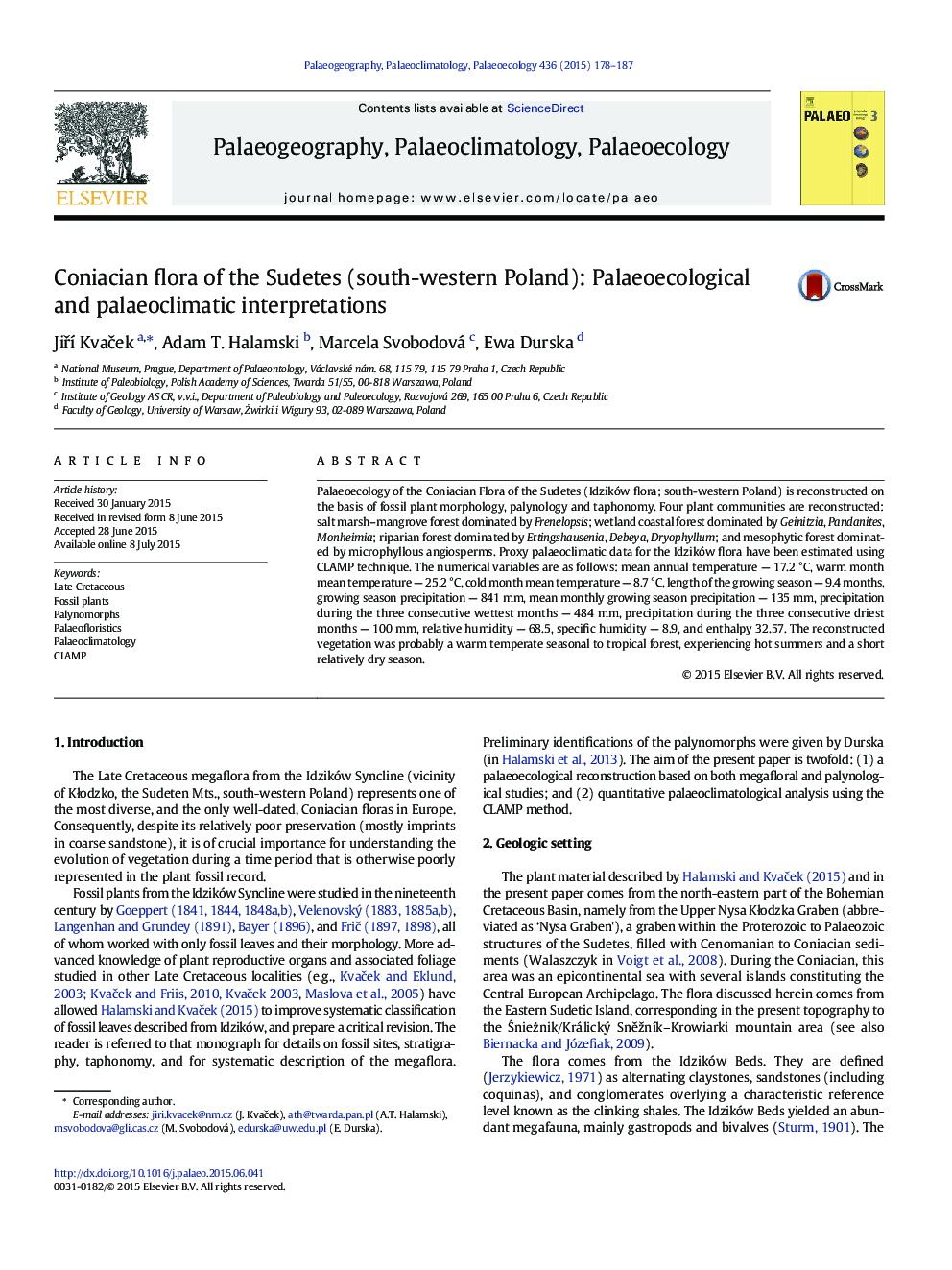| کد مقاله | کد نشریه | سال انتشار | مقاله انگلیسی | نسخه تمام متن |
|---|---|---|---|---|
| 4465904 | 1622154 | 2015 | 10 صفحه PDF | دانلود رایگان |

• Palaeoecology is reconstructed based on fossil plant morphology, palynology and taphonomy.
• Proxy palaeoclimatic data are based on CLAMP.
• Plant communities are defined including mangrove, wetland, riparian and mesophytic forests.
• Fossil vegetation is reconstructed as a seasonal warm temperate to tropical forest.
Palaeoecology of the Coniacian Flora of the Sudetes (Idzików flora; south-western Poland) is reconstructed on the basis of fossil plant morphology, palynology and taphonomy. Four plant communities are reconstructed: salt marsh–mangrove forest dominated by Frenelopsis; wetland coastal forest dominated by Geinitzia, Pandanites, Monheimia; riparian forest dominated by Ettingshausenia, Debeya, Dryophyllum; and mesophytic forest dominated by microphyllous angiosperms. Proxy palaeoclimatic data for the Idzików flora have been estimated using CLAMP technique. The numerical variables are as follows: mean annual temperature — 17.2 °C, warm month mean temperature — 25.2 °C, cold month mean temperature — 8.7 °C, length of the growing season — 9.4 months, growing season precipitation — 841 mm, mean monthly growing season precipitation — 135 mm, precipitation during the three consecutive wettest months — 484 mm, precipitation during the three consecutive driest months — 100 mm, relative humidity — 68.5, specific humidity — 8.9, and enthalpy 32.57. The reconstructed vegetation was probably a warm temperate seasonal to tropical forest, experiencing hot summers and a short relatively dry season.
Journal: Palaeogeography, Palaeoclimatology, Palaeoecology - Volume 436, 15 October 2015, Pages 178–187